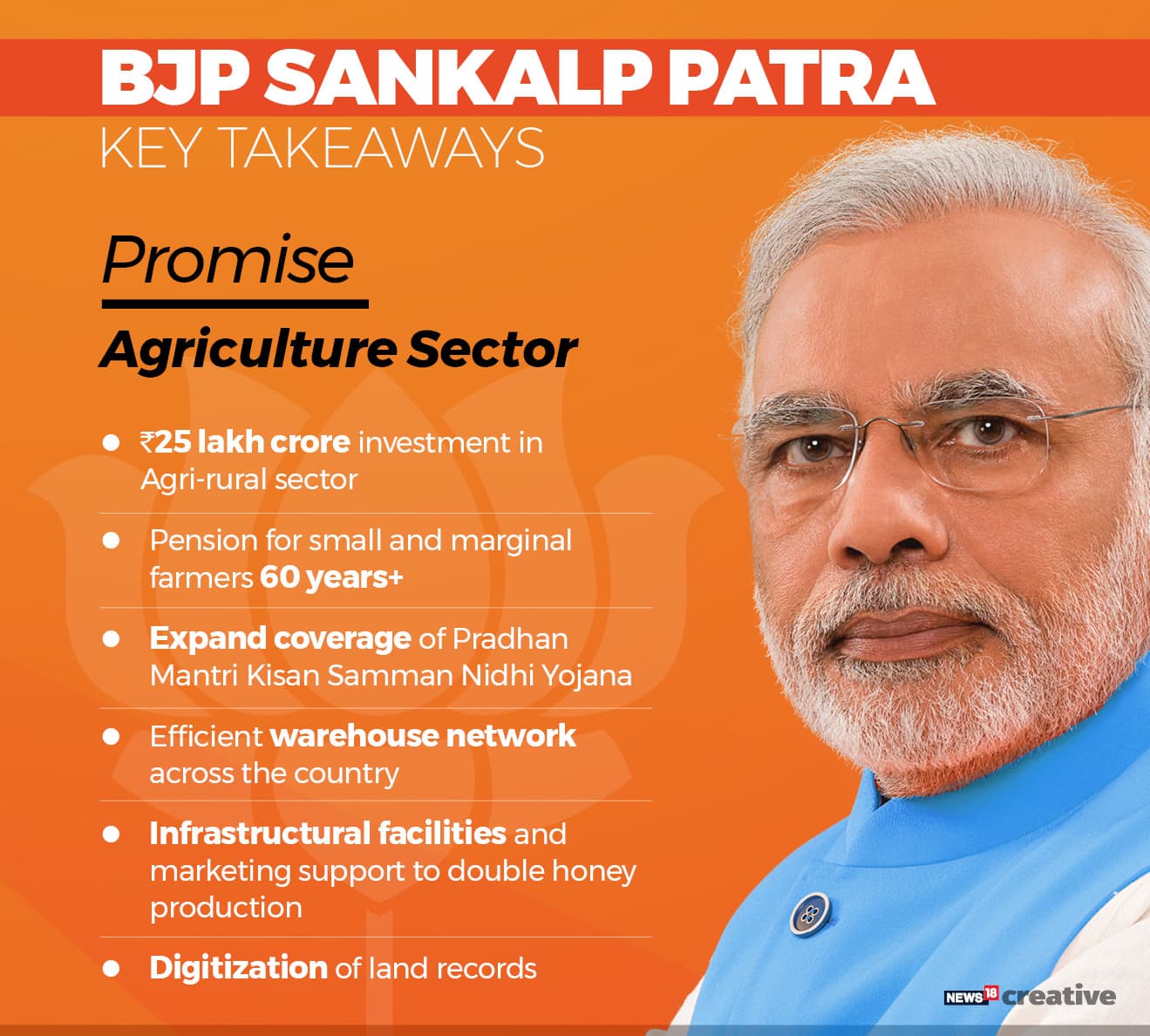


The Bharatiya Janata Party (BJP) released its manifesto for the 2019 Lok Sabha elections on April 8.
The BJP’s ‘Sankalp Patra’ as the party has named its manifesto, made a string of promises, including expeditious construction of the Ram Mandir, a firm hand in dealing with terrorism and doubling farmers income in the next three years.
The party also promised to make India the third largest economy globally by 2030 and scrap Article 370 that gives special status to Jammu and Kashmir, if it retains power.

The manifesto received backlash from arch rival Congress. Party chief Rahul Gandhi said it was the voice of "an isolated man", besides being "short-sighted" and "arrogant".
Congress leader Ahmed Patel dubbed the BJP's election manifesto a "Jhansa Patra" (deception document) and a "bubble of lies" and said it would have been better had they issued a "maafinama" instead.

The criticism to BJP’s manifesto was similar to what the saffron party had done after the Congress released its poll manifesto titled "We Will Deliver" on April 2.
In the document, the party had promised creation of employment opportunities, addressing farm distress, bringing a single moderate rate of Goods and Services Tax (GST) and giving Rs 72,000 per annum to poor families as the key focus if the party comes to power.

The manifesto was massively criticised by PM Modi and leaders of the saffron party. The PM had termed the manifesto a "hypocrisy document" which was "full of lies".

BJP President Amit Shah also lambasted Congress leaders over the party's promise of reviewing the Armed Forces (Special Powers) Act (AFSPA) and withdrawing the anti-sedition law, saying they should "drown" themselves in a pool of water, as he pledged his party's support to the forces and sanctity of AFSPA.

Here are key promises from the two manifestos on common points:
| Issue | BJP | Congress |
| For poor | > To ensure access to government jobs and higher education through the 10% EWS reservation. | > To introduce the Nyuntam Aay Yojana (NYAY) under which Rs 72,000/year will be transferred to the poorest 20 per cent households in India. |
| Farmers | > Achieve the target of doubling farmers' income by 2022. > Provide short-term new agriculture loans up to Rs 1 lakh at a 0% interest rate for 1-5 years on the condition of prompt repayment of the principal amount. > Expand the coverage of the Pradhan Mantri Kisan Samman Nidhi Yojana. | > Separate "Kisan Budget" every year. > Permanent National Commission on Agricultural Development and Planning. > Remunerative prices, lower input costs and assured access to institutional credit. |
| Jobs | > Will create new opportunities for employment by providing more support to 22 major > 'Champion Sectors' identified as the main drivers of the Indian economy. > Set-up of new 'Entrepreneurial Northeast' scheme to provide financial support to MSMEs and for employment generation in the North-eastern state. | > Filling all 4 lakh central government vacancies before March 2020. > Persuading the state governments to fill their 20 lakh vacancies. > Creating an estimated 10 lakh new Seva Mitra positions in every gram panchayat and urban local body. > Requiring businesses with over 100 employees to implement an apprenticeship programme. |
| GST | > Will continue with the simplification of the GST process by engaging in dialogue with all stakeholders. | > To simplify the GST regime with a single moderate rate of tax, zero-rating of exports, and exemption for essential goods and services. > A share of GST revenues to panchayats and municipalities. |
| Healthcare | > To establish 1.5 lakh health and wellness centres under Ayushman Bharat. > To increase the doctor-population ratio to 1:1400. > To increase the number of childcare facilities threefold. | > To enact the Right to Healthcare Act. > To double expenditure on healthcare to 3% of GDP by 2023-24. |
| Defence | > To speed up the purchases of outstanding defence related equipment and weapons. > To focus on 'Make in India in Defence' to enable indigenous production of defence equipment. | > To reverse the trend of declining defence spending under the NDA government. > To expedite all modernisation programmes of the Armed Forces in a transparent manner. > To improve social security, education and health facilities for Paramilitary Forces and families. |
| Housing | > To ensure pucca houses for families living in kuchha houses by 2022. | > To pass Right to Homestead Act to provide a piece of land for every rural household that does not own a home or own land on which a house may be built. |
| Women's empowerment | > Work towards increasing female workforce participation rate. > Ensure justice for Muslim women by enacting the law against triple talaq. | > To pass in the first session of the 17th Lok Sabha the Women’s Reservation Bill reserving 33% of seats for women in the Lok Sabha and the State Legislative Assemblies. > To reserve 33% of all posts/vacancies in the Central Government for women |
For the latest election news and live updates, follow our LIVE blog
Discover the latest Business News, Sensex, and Nifty updates. Obtain Personal Finance insights, tax queries, and expert opinions on Moneycontrol or download the Moneycontrol App to stay updated!
Find the best of Al News in one place, specially curated for you every weekend.
Stay on top of the latest tech trends and biggest startup news.